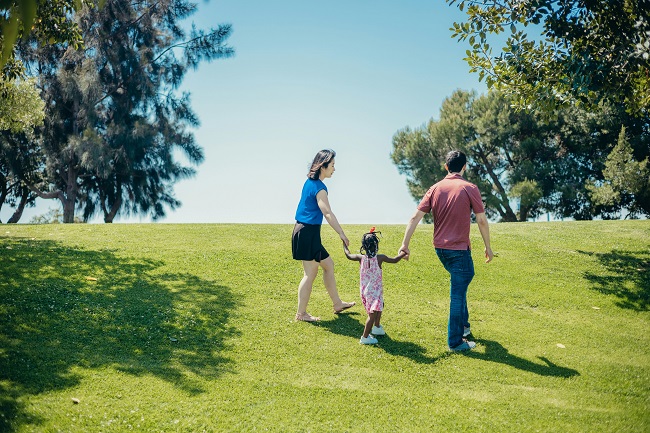The decision to adopt is exciting and life-changing for any family. Chelsea Acton once emphasized the importance of careful planning and preparation in parenting, which is especially true for adoption. The process can be complex and requires thoughtful consideration. First-time adoptive families often find themselves navigating a maze of legal, emotional, and logistical challenges. Understanding the essential steps involved can make this journey smoother and more manageable. From initial research to post-adoption support, each phase is crucial for a successful adoption experience.
1. Conduct Thorough Research
The first step in the adoption journey is to conduct thorough research. This involves understanding the different types of adoption available, such as domestic, international, and foster care adoption. Each type has its own set of requirements, processes, and potential challenges. Families should also research the laws and regulations that govern adoption in their state or country, as these can vary significantly. By gaining a comprehensive understanding of the options and legalities, families can make informed decisions that best suit their situation and preferences. In addition to researching the types of adoption and legal requirements, it is essential to look into various adoption agencies and professionals. Finding a reputable adoption agency or lawyer is critical, as they will guide you through the process and provide the necessary support. Reading reviews, seeking recommendations, and attending informational sessions can help you select the right agency or professional. Understanding the potential costs associated with adoption and planning financially will ensure that families are prepared for the journey ahead. Comprehensive research lays the foundation for a smooth and informed adoption process.
2. Complete the Home Study Process
Once initial research is done, the next step is to complete the home study process. This is a mandatory step in most adoptions and involves a thorough evaluation of the prospective adoptive family’s home environment and lifestyle. A licensed social worker will conduct home visits, interviews, and background checks to ensure that the family is prepared to provide a safe and loving home for a child. This process can take several months and requires families to be open and honest about their lives and motivations for adopting. During the home study, the social worker will assess various aspects of the family’s life, including their financial stability, health, and parenting philosophy. Families may also need to attend training sessions or complete specific coursework related to adoption and parenting. The goal of home study is not only to evaluate the suitability of the adoptive family but also to prepare them for the unique challenges and joys of adoption.
3. Create an Adoption Profile
Creating an adoption profile is a crucial step for families pursuing domestic adoption. An adoption profile is a document or a scrapbook that introduces the prospective adoptive family to birth parents who are considering placing their child for adoption. This profile typically includes photos, personal stories, and descriptions of the family’s lifestyle, values, and reasons for wanting to adopt. The aim is to provide a genuine and heartfelt representation of the family, helping birth parents make an
informed decision about the best placement for their child. It is important to be authentic and transparent when creating an adoption profile. Birth parents are looking for a connection and a sense of trust, so sharing real-life experiences and emotions can make the profile more relatable. Professional services and agencies often offer guidance and assistance in creating an effective profile. They can help families highlight their strengths and present themselves in the best possible light.
4. Prepare for the Matching Process
After the adoption profile is completed, the next step is to prepare for the matching process. This is the stage where prospective adoptive families are matched with birth parents or children available for adoption. The matching process can vary in length and complexity, depending on the type of adoption and the specific circumstances. During this time, families should remain patient and flexible, as the process can be unpredictable and emotionally challenging. To prepare for the matching process, families should continue to educate themselves about adoption and parenting. Attending support groups and connecting with other adoptive families can provide valuable insights and emotional support. It is also important to maintain open communication with the adoption agency or professionals involved. They can provide updates, answer questions, and offer guidance throughout the matching process.
5. Post-Adoption Support and Adjustment
The final step in the adoption journey is post-adoption support and adjustment. Once the adoption is finalized and the child is welcomed into the home, the real work of building a family begins. This period can be both joyous and challenging as everyone adjusts to their new roles and relationships. Families need to seek out post-adoption support services, such as counseling, support groups, and educational resources. These services can assist in navigating the complexities of adoption and promoting a healthy family dynamic. Post-adoption support is beneficial for the adoptive parents and the adopted child. Children may experience a range of emotions and behaviors as they adapt to their new environment. Professional support can help address these challenges and foster a positive transition. Maintaining open and honest communication within the family is key to building trust and security. Celebrating milestones, creating new traditions, and allowing time for bonding are essential elements of the adjustment process. With the right support and resources, families can thrive and create a loving, stable home for their adopted child.
Conclusion
The adoption journey is a profound and rewarding experience that requires careful planning and preparation. Conducting thorough research, completing the home study process, creating an adoption profile, preparing for the matching process, and seeking post-adoption support are essential steps for first-time families. Each step presents its challenges and opportunities. However, with dedication and the right resources, families can successfully navigate the path to adoption. By taking these steps, first-time adoptive families can provide a loving and stable home for a child, creating lifelong bonds and cherished memories.













